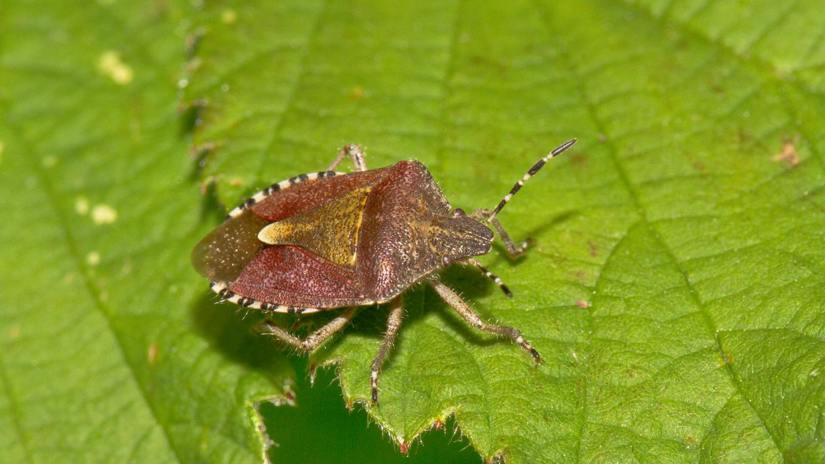
Credit: Blinkwinkel / Alamy Stock Photo
Signs and spotting tips
Look out for forest bugs on leaves along woodland edges and hedgerows between July and October.
A living woodland crest, the forest bug is a shieldbug that loves nothing more than the sap of oak trees. Look for them on woodland edges in the summer.
Common name(s): forest bug, red-legged shieldbug
Scientific name: Pentatoma rufipes
Family: Pentatomidae
Habitat: oak and broadleaf woodland
Predators: birds, reptiles, amphibians
Origin: native
Forest bug larvae are tiny, dark bugs that become lighter as they develop.
The adults grow to a length of 1.1 to 1.4cm and are shield-shaped and shiny with broad, spiked shoulders. They have a dark brown body during autumn and a paler, bronze-coloured body in summer. Look out for distinctive red-orange legs and an orange spot on the back.
Don’t confuse for: other shield bugs. Forest bugs have much sharper ‘shoulders’ than other species, a bit like an 80s power suit!
Forest bugs are considered a pest by some farmers and gardeners as they have a taste for fruit and nut trees.
The forest bug’s diet is predominantly made up of the sap of deciduous trees such as oak, alder and hazel. They use their mouthparts to pierce the veins of the tree and draw out the sap. Some adults feed on fruit or may even be partly predatory, feeding on caterpillars and other insects.
Forest bug eggs look like little smiley faces.
Breeding takes place in summer for forest bugs. Females lay eggs on the bark of oak and other deciduous trees during August. The eggs hatch into young nymphs towards the end of August.
Nymphs go through several stages of moulting and overwinter in this form. They usually appear as fully grown as adults the following July.
Forest bugs are considered a pest by some farmers and gardeners as they have a taste for fruit and nut trees.
The forest bug is usually found in broadleaved woodland and gardens across the UK, particularly where there are oak trees, from July to November.

Credit: Blinkwinkel / Alamy Stock Photo
Look out for forest bugs on leaves along woodland edges and hedgerows between July and October.

Amy Lewis • 14 May 2021
There are a number of shieldbug species in the UK, characterised by their flat, often triangular bodies and distinctive, shield-like shapes on their backs. Learn to tell which is which with our quick and easy guide to some of Britain's most familiar types.
Learn about shieldbugs